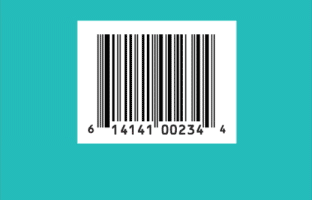
A side-hustle. A home-based business. A startup. Whatever you call it—congratulations! You’re the owner of a small business. You have a great product, and Amazon, eBay, Etsy and other websites offer ready-made distribution platforms to get your products sold.
To ensure your products stand out in a crowded online marketplace, small businesses must learn how to accurately identify and barcode their items. Why is this important? Consider barcoding your products as a way to make them searchable in results. Here’s more on how this process works and other key points for identifying your products correctly.
Why Barcodes Matter Online
Barcodes are everywhere and can be found on nearly every product around the world. We’ve all seen barcodes scanned at the register while shopping, but what you might not know is that the numbers in barcodes are very valuable online as well. The identifier for physical products is the same one you use to sell items online. They create a key link between online listings and physical products, helping you stay organized in inventory management. They also enhance your product’s visibility in search results when customers shop online.
Most importantly, you should care about having the proper barcodes in place because the online marketplaces do. Some leading online retailers have hidden product listings that are not identified with the proper UPC (universal product code). Amazon states clearly on its Seller Central website that it will verify that product identification numbers are authentic and linked specifically to the company selling the product. eBay and Google have similar guidelines. To sell successfully with these and other retailers, it’s important to come up to speed on barcodes, UPCs, and how to get them set up properly from the start.
Barcode Building Blocks
There are two basic barcoding terms you need to know—UPC and GTIN. Many retailers require their suppliers to use Global Trade Item Numbers (or GTINs) in their product identification processes. These numbers uniquely identify a product when it is listed online, or is read by a barcode scanner. A UPC is the most common type of barcode symbol—you see the series of black lines on products every day. A UPC barcode is encoded with a product GTIN, making it easy to track a product on its journey to a customer. The product’s GTIN is the series of numbers you see below the bars and spaces of the UPC barcode.
Getting GTINs and UPC barcodes begins with licensing an authorized GS1 Company Prefix. A GS1 Company Prefix is a unique identification number issued just to your company—it’s part of every GTIN and UPC you create and identifies your company as the brand owner in the global supply chain.
It is a reliable and globally recognized way to represent your brand. By identifying both the company and its products this way, startups can set themselves up for growth since these numbers are universally accepted by trading partners.
Using your Company Prefix, you can follow industry best practices and retailer requirements to create unique GTINs for each product variation you sell. Product variations, such as different packaging quantities, colors, scents or flavors, require different GTINs to distinguish one variation from another.
Buying Barcodes vs. Creating Them
Any small business owner just starting out wants to be successful and prepared for the business to grow. That’s why small businesses have learned about the value of creating barcodes themselves versus purchasing them from a third party. Barcodes sold by third party companies may scan just fine at the checkout counter, but the GTIN encoded in the barcode may not identify your brand. Barcodes that are purchased—not constructed using a unique Company Prefix as the basis for your GTINs—will identify another brand owner. Taking this shortcut could create a growth obstacle if a retailer or online marketplace requires that your brand be uniquely identified in your product GTINs. It could also mean additional costs associated with having to relabel your products according to retailer requirements.
Beyond the Barcode
The right product identification number is just one part of selling successfully online—there is other product data you need to gather to provide consumers with the full picture of what you’re selling. Make sure your product can be discovered by including all of the unique attributes or selling points of your product in your online listing. Someone searching for holiday themed earrings, for example, would benefit from knowing the length of the earring, if it lights up, and if they are made of metal (which can be heavy) or lighter plastic material. These characteristics can help the consumer envision how they will use the product and help you stand out among the competition.
Images also play a huge role in increasing visibility and sales online. A recent study from Splashlight found that almost half (47 percent) of U.S. online consumers rate high quality product images as the most influential factor when considering a product purchase. Additionally, 50 percent of consumers would like to see a minimum of 3-5 product photos (front, back, side) online before they consider making a purchase.
There are a variety of expert content providers that specialize in compiling and storing product data and images, helping you grow. Digital content providers with significant e-commerce experience are an invaluable ally to small businesses in order to gather and present the right kind of product data to the right audience.
The bottom line is that e-commerce is an “always open for business” world. Ultimately, having the right combination of authentic product identification, extended attributes, and compelling images means you are prepared to make a lasting first impression and are ready to support your business’s growth.